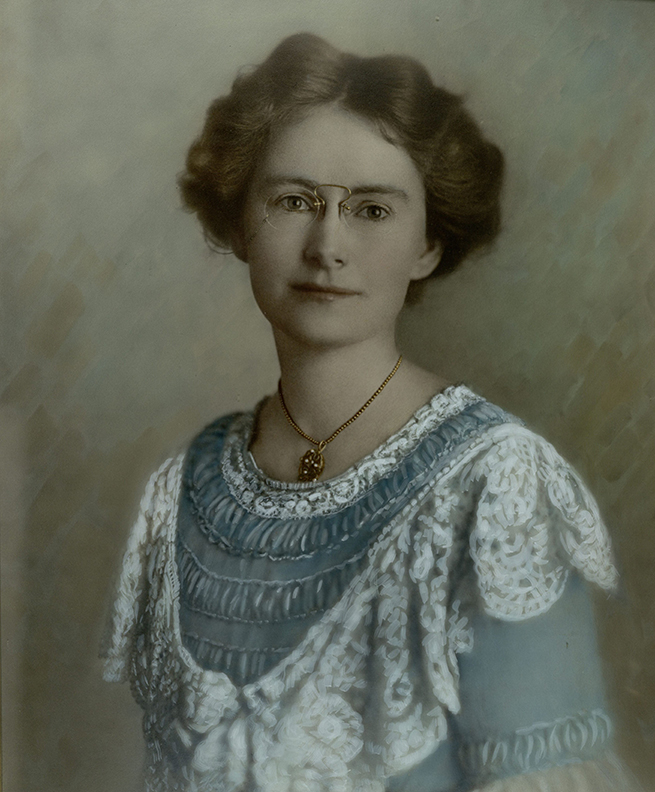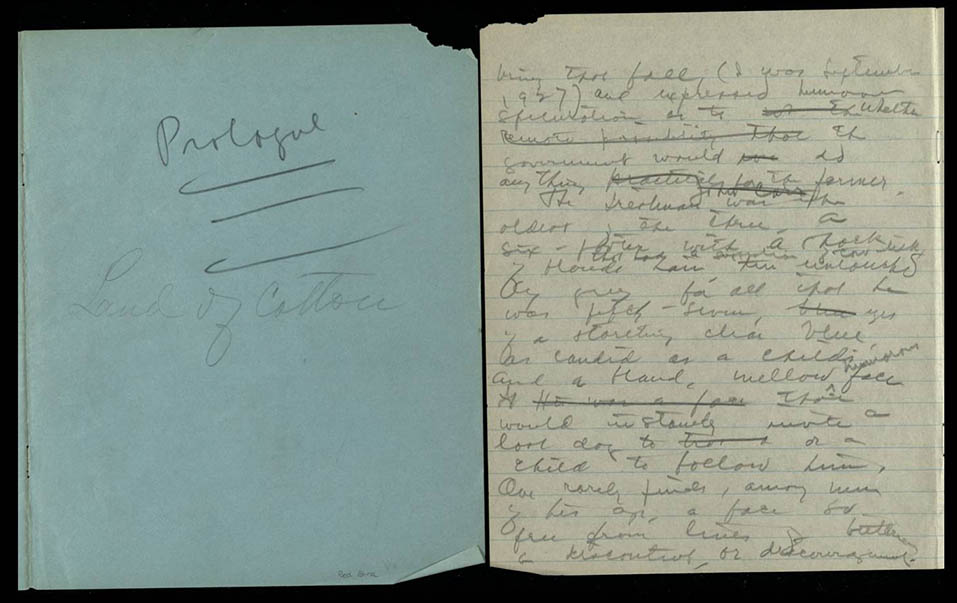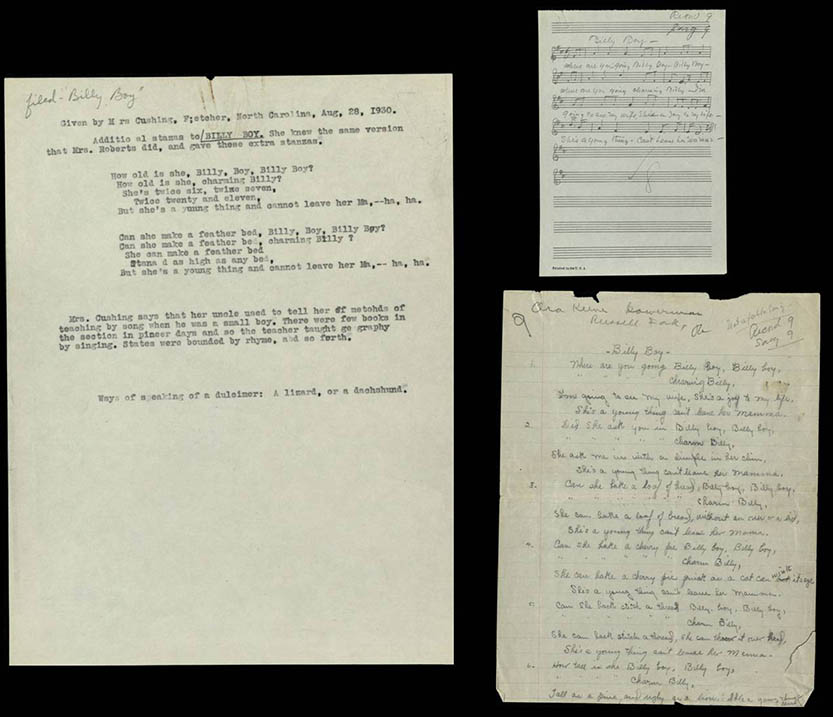Each month, we post an update to notify our readers about the latest archival collections to be processed and some highlights of our print material acquisitions. These resources are primed for research and are just a sampling of the many resources to be found at The Texas Collection!Continue Reading
Folklore
Documenting the Parker Family Story at The Texas Collection (Part 3)
For the past two weeks, we’ve been writing about the Parker family—see Part 1 and Part 2. Last week’s post was about the preservation of Old Fort Parker. Today we continue the story with the Parker family’s work to preserve its historical documents—what is now the Jack and Gloria Parker Selden collection, housed at The Texas Collection.
The story of preserving Parker family materials through time is impressive in its own right. With many documents in the collection dating back to the 19th century, it is remarkable that so many of these papers survived. Family historians faithfully stored and studied the documents and made sure the materials endured for the next generation of the family. Now, by giving them to The Texas Collection, these documents are preserved and accessible for the public to view and research.
Materials in this collection were assembled, collected, and preserved by three distinct groups in the Parker family: Joseph and Araminta Taulman, Lee Parker Boone, and Jack Selden, though many other Parker family members contributed to the preservation of their family history, including Joe Bailey Parker and Ben J. Parker. Each of the three major preservation groups represents a different generation in the Parker family history, and each contributed different research materials and collecting emphasis to the collection.

It seems that family members began gathering historical documents relating to family history very early in their time in Texas. By 1854, the materials were stored in a container the family has referred to as the “blue box” by Dan Parker, grandson of Daniel Parker. This box of documents was added to over time and passed down through the family. It eventually came to Jack Selden and contained most of what is now Series I, the oldest materials in the collection.
Joseph and Araminta Taulman were active in Texas public history in the 1930s. Araminta was the great-great-granddaughter of Daniel Parker, patriarch of the Parker family in the 1830s. While the Taulmans created some materials now in the Jack and Gloria Parker Selden collection, most of the Taulman papers are now in the Joseph E. Taulman Collection at the Briscoe Center for American History at The University of Texas at Austin.

Lee Parker Boone, born in 1891, focused on collecting and describing Parker genealogy information for much of his life. Boone was a court reporter in Midland, Texas. In the Selden collection, many of the letters inquiring about family trees and giving information about possible family relationships were from or to Boone.
Jack Selden was born in 1929 and graduated from Palestine High School in Texas. After graduating from George Washington University, he served in the United States Air Force as a navigator and speechwriter for 21 years, eventually becoming a lieutenant colonel. Returning to Palestine, he became a civil trial assistant. In 1985, he became mayor of Palestine, serving three terms.

At some point, Selden became the historian of the Parker family and faithfully preserved an increasingly large collection of documents, photographs, and other materials containing his research on the topic, plus the work of Lee Boone, selections from Joseph Taulman, and others who contributed to preserving the Parker family story. With these resources, Selden wrote and published a book on the Parker family in Texas history. Return: The Parker Story, published in 2006, documents the Parker family’s arrival in Texas, and traces their history through Cynthia Ann Parker, Quanah Parker, and others, up to the Parker family reunions today. This past year, Selden donated this collection of materials to The Texas Collection.
Jack Selden also wrote and performed in the “Telling of the Tales,” a dramatic reading of the Cynthia Ann Parker story. Other Parker family members also participated in the production. This drama was performed several times for the public, both at Old Fort Parker in the early 1980s and at Pilgrim Baptist Church near Elkhart, Texas. Programs and scripts from “Telling of the Tales” performances can be found in the Selden collection.
This concludes our series celebrating the Jack and Gloria Parker Selden papers arrival at The Texas Collection. Mark your calendar for Selden’s lecture: Thursday, February 18, at 3:30 pm in the Guy B. Harrison Reading Room of The Texas Collection, located in Carroll Library at Baylor University. If you can’t make the lecture, follow us on Twitter—we’ll be live-tweeting the event at #ParkerFamilyTX.
Sources:
Find a Grave, Inc. “Lee Parker Boone.” Memorial #22788886. Databases. Accessed February 8, 2016.
Joseph E. Taulman Collection, 1783-1994, Dolph Briscoe Center for American History, University of Texas at Austin.
Selden, Jack. Return: the Parker Story. Palestine: Clacton Press, 2006.
Documenting the Parker Family Story at The Texas Collection (Part 2)
We recently wrote about the story of Cynthia Ann and Quanah Parker. Today we continue the story by discussing efforts through time to remember their story by preserving Fort Parker.
After the events of the Parker story in Texas—Cynthia Ann’s capture by Comanche, her recapture and return to Texan society, her son Quanah’s role as military leader against the United States army, and his subsequent role as a political leader to help the Comanche on the reservation—the Parker story became a popular one in Texas. (See Part One of this blog series if you need a refresher.) With Texan interest in historic preservation growing due to the impending Texas Centennial in 1936, people began to work towards preserving the site of Parker’s Fort or Fort Parker.

While the original fort was long gone, the site was selected in the 1930s as a work area for the Civilian Conservation Corps (CCC). It was decided to build a replica fort, matching as closely as possible the original fort built by the Parkers. Several Parker family members visited the site of replica fort in the 1930s to help verify that it was the site of the original fort. Construction was still underway as the Texas Centennial came and went.

Only a couple of miles away, the same CCC camp built camping and outdoor recreational facilities around a 670 acre lake, formed from building a dam across the Navasota River. While the plan originally called for one site to be named Fort Parker State Park, which would include the replica fort, the lake, and all the recreational facilities, eventually the site was split into two separate areas. Confusingly, the recreation area with the lake became known as Fort Parker State Park, while the replica fort site became known as Old Fort Parker State Historic Site, or just the Old Fort.
In 1941, after years of planning and construction, Fort Parker State Park was opened to the public. Along with fishing, boating, and fireworks, people could also visit Old Fort Parker, where construction was complete on the replica fort.
After many years of use, the replica fort at the Old Fort site was rebuilt in 1967. Both Fort Parker sites were operated by Texas Parks and Wildlife Department until 1992, when the nearby cities of Groesbeck and Mexia, and Limestone County took over operations of the Old Fort. Fort Parker State Park continues to operate as a Texas Parks and Wildlife Department site.

Today, visitors to Old Fort Parker can tour the replica fort, various historic structures from Central Texas, and the visitor center. For research opportunities, patrons can visit The Texas Collection and view materials on the Parker family and Old Fort Parker.
The next post in this series will examine the various creators of the Selden collection. Mark your calendar for Selden’s lecture: Thursday, February 18, at 3:30 pm in the Guy B. Harrison Reading Room of The Texas Collection, located in Carroll Library at Baylor University.
Documenting the Parker Family Story at The Texas Collection (Part 1)
The Texas Collection recently acquired a group of historic documents on the Parker family, including Cynthia Ann Parker and her son Quanah Parker. This amazing collection is one of several record groups on the Parker family already at The Texas Collection. In anticipation of Jack Selden’s February 18 lecture, “Return: the Parker Story,” this blog post will be the first in a series of posts that tell the story of the Parker family in Texas.
Cynthia Ann Parker came to Texas with 38 family members from Illinois in 1833, and the family settled near Groesbeck. By the summer of 1835, the Parkers had a rough wooden fort built that was called Parker’s Fort or Fort Parker. The family tended crops on about 12 miles along the Navasota River, returning as needed to the fort.

By 1835-1836, situations in Texas had changed drastically from when the Parkers first came to Texas. Good relations with local American Indian groups had given way to open hostility, as Texans attacked a Kichai village to recover horses thought to have been stolen. For several weeks, this group of Texans used Parker’s Fort as a base to search surrounding areas for Indian groups that they believed had stolen their horses.
Working relationships with the Mexican government had also deteriorated. Military hero Antonio López de Santa Anna overthrew the previous government, put down rebellions that broke out in various Mexican states, and sent military units to Texas to enforce Mexican law. By 1836, Santa Anna himself was in Texas at the head of a Mexican army to put down a brewing rebellion among the colonists, who spoke openly of independence from Mexico. After a string of Mexican victories, Sam Houston led a Texian army to win the Battle of San Jacinto in April 1836, and the Texas Revolution was over.

Just one month after the Battle of San Jacinto, on May 19, 1836, Parker’s Fort was attacked by an American Indian force of several hundred warriors, long understood by eyewitnesses to be predominantly Comanche. With many of the Parker men out working in the fields, the 30 people in the fort were quickly overwhelmed. Five Parker family members were killed and five others were captured, but the rest escaped. One group of Parker family members, traveling only at night for safety, trekked 90 miles in six nights to the safety of Tinnenville.

One of those captured was Cynthia Ann Parker. Just twelve or thirteen when taken captive, she was adopted into the tribe and became thoroughly Comanche. She became the wife of Peta Nocona, a noted leader in the Naconi band of the Comanche. They had three children, two boys and a girl: Quanah, Pecos, and Topsannah. Peta Nocona was probably killed in the Battle of the Pease River in 1860. Cynthia Ann was captured by Texas Rangers in this battle, and was identified as the Parker’s Cynthia Ann, who had been with the Comanche for almost 25 years. Though she was returned to Texan society, Cynthia Ann never recovered from her capture and made several attempts to escape back to her life on the plains. She died in 1870, and was originally buried in Fosterville Cemetery, Anderson County, but was reinterred in the Post Oak Mission Cemetery near Cache, Oklahoma, in 1910. Cynthia Ann was reburied a final time in 1957 in the Fort Sill Post Cemetery, Lawton, Oklahoma.
Cynthia Ann’s son Quanah Parker became the last major Comanche chief to surrender to United States authorities. A leader in the Quahada subtribe of the Comanche, Quanah for years frustrated the efforts of the United States army to capture his people. After the Comanche defeat in the Battle of Adobe Walls in 1875, Quanah and his people were pursued by the United States army during the Red River War, the last major military campaign in Texas. After their supplies were destroyed, Quanah and his people were forced to surrender, and were taken to the reservation designated for the Comanche and Kiowa in southwestern Oklahoma.
Over time, Quanah adjusted to reservation life and became a very wealthy and influential man. Though increasingly powerful in Indian-government relations, he could not stop the movement to break up the reservations and distribute the land among the individual Indians, who were then forced to sell much of their land by unscrupulous land dealers. Quanah continued his efforts to help his people however he could, including negotiating leases of land to ranchers, which brought in much-needed income for the tribe. After a visit to the Cheyenne Reservation, Quanah became ill and died twelve days later, in 1911. His remains have been moved once, from Post Oak Mission Cemetery in Oklahoma to Fort Sill Post Cemetery, Lawton, Oklahoma.
The next post in this series will focus on the restoration of the Fort Parker historic site, and the final post will examine the various creators of the Selden collection. Mark your calendar for Selden’s lecture: Thursday, February 18, at 3:30 pm in the Guy B. Harrison Reading Room of The Texas Collection, located in Carroll Library at Baylor University.
Sources:
Gwynne, S.C. Empire of the Summer Moon: Quanah Parker and the Rise and Fall of the Comanches. New York: Scribner, 2010.
“Fort Parker Massacre.” Wikipedia. https://en.wikipedia.org/wiki/Fort_Parker_massacre. Accessed 27 January 2016.
Handbook of Texas Online. https://www.tshaonline.org/handbook. Accessed 27 January 2016.
Selden, Jack. Return: the Parker Story. Palestine: Clacton Press, 2006.
Joseph E. Taulman Collection, 1783-1994, Dolph Briscoe Center for American History, University of Texas at Austin.
“The History.” Old Fort Parker. http://www.oldfortparker.org/The_History_1DLU.html. Accessed 27 January 2016.
Vernon, Cheril. “Selden to be Honored by Library.” Palestine Herald-Press. November 8, 2008. Accessed September 25, 2015.
Dottie Scarborough: A Woman of Many Talents
By Casey Schumacher, Graduate Assistant, The Texas Collection, and Museum Studies graduate student

Dorothy, or “Dottie” as she was known to her friends and family, achieved an outstanding education and professional career for a woman in the early 20th century. Born on January 27, 1873 in Mount Carmel, Texas, she received a BA and MA in English from Baylor University before completing her doctoral work at Columbia University in 1917. She also attended the University of Oxford from 1910-1911, even though they did not grant degrees to women at the time. After receiving her PhD, Scarborough went on to teach at Columbia, where she specialized in courses on creative writing but taught classes on a multitude of topics, including the Development of the English Novel and the History of the English Language. The Dorothy Scarborough papers also include extensive teaching and research notes, programs, and invitations from her time at Columbia.

Scarborough’s collection reflects her wide range of interests and includes many drafts and typescripts of her publications (she published five novels along with scripts, short stories, essays and poems), as well as some unpublished work. Her doctoral thesis discussed the supernatural in modern English fiction, and later publications featured research in southern life, the history of the cotton industry, ghost stories, marriage, gender, poetry, and short stories. In addition, Scarborough was a strong advocate for the study of folklore. She served as president of the Texas Folklore Society from 1914-1915, was a founding member of the American Folk Song Society, and a lifelong member of the American Folklore Society.

One of Dottie’s main interests was in the area of folklore and folk songs. Two of her books, On the Trail of Negro Folk Songs and A Song Catcher in Southern Mountains document her journeys throughout the South collecting personal stories and folksongs from anyone who would share them with her. Travel notes, sheet music, and hundreds of pages of lyrics make up a significant part of her collection and demonstrate the passion she devoted to her research.
Dottie’s career truly embodied the values of leadership and service so deeply cherished at Baylor University. Anyone interested in her personal life, her folklore and English research, or women in academia during the 1920s-1930s will find a wealth of information in her personal and professional papers.
Research Ready: March 2015
Each month, we post a processing update to notify our readers about the latest collections that have finding aids online and are primed for research. Here are March’s finding aids:

Contains research, teaching, and personal materials of noted Southern folklorist Dorothy Scarborough, who taught English at Baylor University for ten years.
Two letters describing the Galveston Hurricane of 1900, one of the deadliest natural disasters to affect the United States.
Materials include documents relating to Mann’s professional career in the United States State Department as a Foreign Service diplomat.
